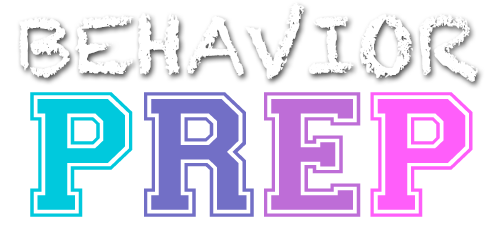B.12 Identify examples of stimulus control
Stimulus control in applied behavior analysis refers to the influence of antecedent stimuli on the occurrence, frequency, and characteristics of a behavior. It occurs when a particular behavior is more likely to occur in the presence of specific stimuli, while being less likely to occur in the absence of those stimuli. In other words, the behavior is under the control of certain environmental cues or signals.
Discriminative Stimulus (SD)
A discriminative stimulus is a specific antecedent stimulus that signals the availability of reinforcement for a particular behavior. It sets the occasion for the behavior to occur by indicating that a specific response is likely to be reinforced.
Example: In a classroom setting, a teacher gives a verbal instruction (“Take out your math book”) before a math lesson. The verbal instruction serves as a discriminative stimulus that signals to the students that they should take out their math books. The behavior of taking out the math book is more likely to occur in the presence of the teacher’s instruction (SD) compared to other situations..
Generalization
Generalization occurs when a behavior that has been reinforced in the presence of a specific stimulus also occurs in the presence of similar stimuli that share common features.
Example: A child learns to greet their teacher with a handshake in the classroom setting. Over time, the child may start greeting other authority figures, such as their parents, with a handshake as well. The behavior of greeting with a handshake has generalized to different settings and individuals based on the common stimulus features of authority figures.
Stimulus Discrimination
Stimulus discrimination refers to the ability to respond differently to different stimuli, even if they share similarities. It involves distinguishing between relevant and irrelevant stimuli to produce the desired behavior.
Example: A dog is trained to bark when the doorbell rings but remains quiet when other similar sounds, such as a phone ringing, occur. The dog has learned to discriminate between the specific sound of the doorbell (relevant stimulus) and other similar sounds (irrelevant stimuli).
Stimulus Fading
Stimulus fading involves gradually modifying or fading out an initial stimulus to transfer control of the behavior to a new or more natural stimulus.
Example: A child is initially taught to identify numbers using flashcards with large, bold numbers. As the child becomes proficient, the flashcards are gradually faded out, and the child is encouraged to identify numbers in books or other real-life contexts without the use of flashcards..
Stimulus control is an essential concept in behavior analysis as it helps explain how behavior is influenced by environmental cues. By understanding the role of antecedent stimuli, behavior analysts can design interventions that promote the desired behaviors and reduce unwanted behaviors through effective stimulus control procedures.
